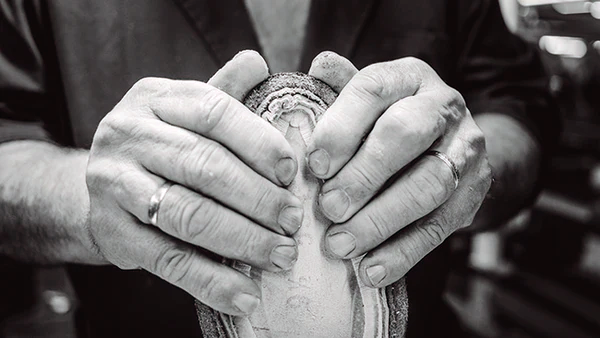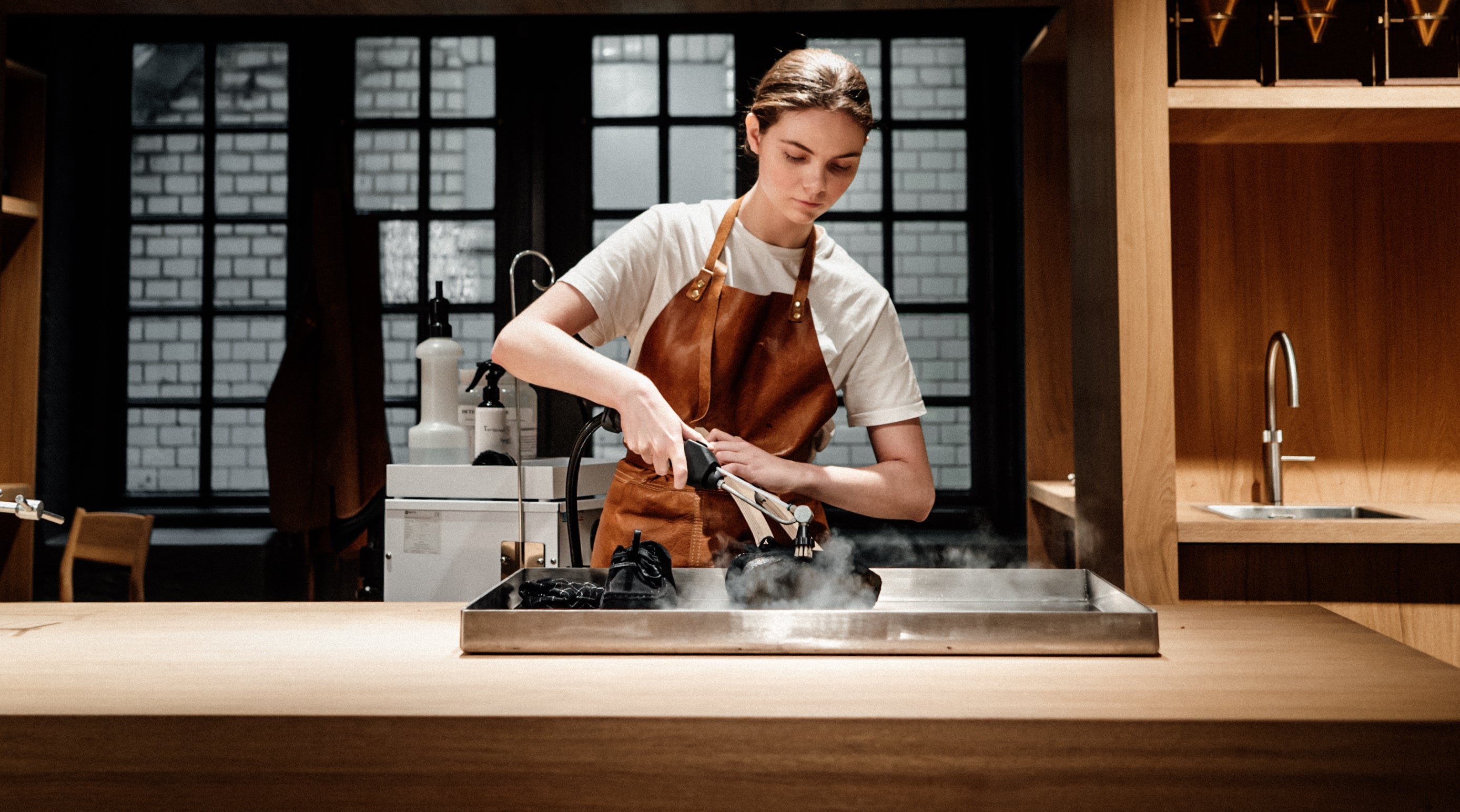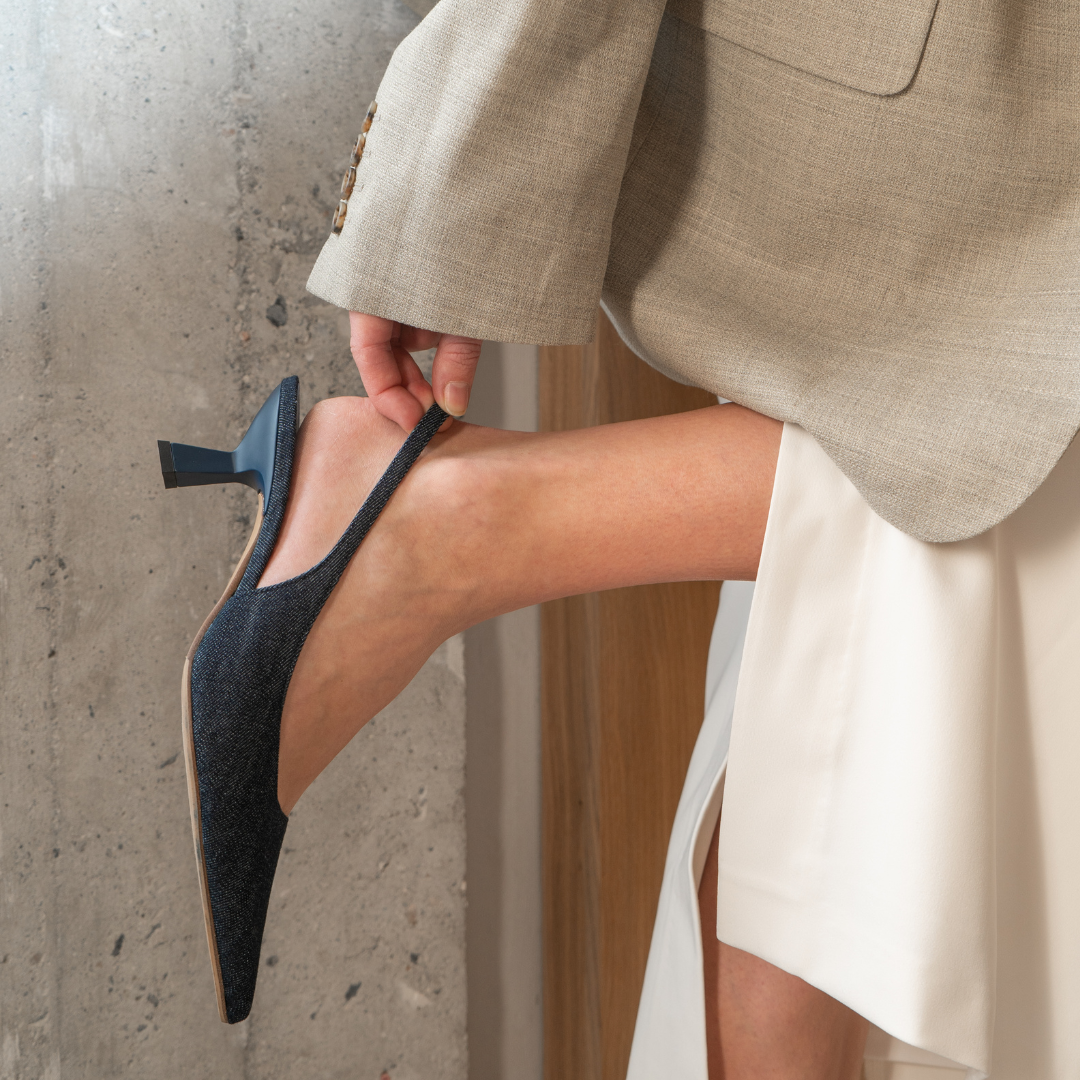
The Goodyear construction
Shoemaking is an art form, but in some parts of the world it is unfortunately being lost. Thanks to cheap, mass-produced shoes held together with literally nothing but rubber cement, many consumers have become accustomed to inferior shoes. But there is a better way;
Buy Less. Buy Better.
Invest in proper quality materials as well as well-thought-out design and craftsmanship – and buy less in return.
WHAT IS GOODYEAR?
Since 1869, when Charles Goodyear Jr. invented the first Goodyear welt machine, Goodyear construction has been part of the highest standard in shoe construction.
Before you can understand the nuances of Goodyear welted shoes, it is beneficial to know the components of leather shoes:
- Last: During the creation of the shoe, the upper leather and insole are wrapped around a shape of a foot, called a last, which helps give the shoe its finished shape.
- Upper: The visible piece of leather or suede that makes up the upper half of the shoe.
- The insole: This is the inner sole that comes into contact with the foot.
- Outsole: The bottom sole that touches the ground.
- Edge stitching: In leather shoes, a leather edge is sewn along the inner circumference of the outer sole.
- Gelenk: A small metal or wooden sole that stiffens the outsole and that goes from the front edge of the heel to where the ball of the foot begins.
WHAT IS THE DIFFERENCE BETWEEN NORMAL STRIPED SHOES AND GOODYEAR STRIPED SHOES ?
In most normally edge-stitched shoes, the upper leather is folded in between the inner sole and the outer sole, after which all three layers are sewn together. In the Goodyear construction, however, an extra piece of leather or cork is used as well as a leather edge stitching for a more secure shoe construction. When the upper leather is placed between the soles and the cork sole, it is placed on top of the edge stitching. Then sew a seam through the edge stitching, the insoles and back through the edge stitching.
However, there is an additional step that gives Goodyear shoes their distinctive look: on the outside of the shoe, a final stitch passes through the bottom sole and welt stitching. This last stitch is visible and because the Goodyear selvedge has a lock stitching method, the stitches will hold even if part of the thread is damaged or torn.
There is only one downside to Goodyear hemming: expertise and craftsmanship cost more.
On the other hand, there are many advantages to these shoes; Not only do they last longer, with the right maintenance. While the welt stitching helps keep water out, it also allows more air in, making these shoes far more breathable and cool in the heat as well as warm and dry in the winter.



